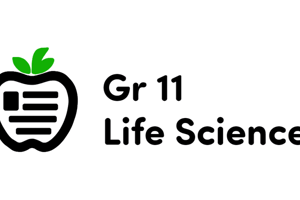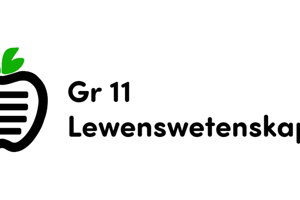Podcast
Questions and Answers
What is the set point for blood glucose concentration in humans?
What is the set point for blood glucose concentration in humans?
- 4mmol/dm³
- 7mmol/dm³
- 6mmol/dm³
- 5mmol/dm³ (correct)
Positive feedback mechanisms are common in the human body.
Positive feedback mechanisms are common in the human body.
False (B)
What is the role of alpha cells in the pancreas?
What is the role of alpha cells in the pancreas?
To secrete glucagon when blood glucose levels fall.
Diabetes is the condition in which a person has consistently elevated blood glucose levels, leading to the presence of glucose in the ______.
Diabetes is the condition in which a person has consistently elevated blood glucose levels, leading to the presence of glucose in the ______.
Match the diabetes type with its description:
Match the diabetes type with its description:
What substance is released by beta cells when blood glucose concentrations rise?
What substance is released by beta cells when blood glucose concentrations rise?
Negative feedback mechanisms work to achieve balance within the body.
Negative feedback mechanisms work to achieve balance within the body.
What happens to tissues when a person has diabetes?
What happens to tissues when a person has diabetes?
Which of the following factors is NOT a main risk factor for Type 2 diabetes?
Which of the following factors is NOT a main risk factor for Type 2 diabetes?
Type 1 diabetes can be treated permanently using stem cells.
Type 1 diabetes can be treated permanently using stem cells.
What is the human set point for core body temperature?
What is the human set point for core body temperature?
The hypothalamus initiates responses to regulate body temperature when it detects __________ from thermoreceptors.
The hypothalamus initiates responses to regulate body temperature when it detects __________ from thermoreceptors.
Match the following treatments for diabetes with their description:
Match the following treatments for diabetes with their description:
Which hormone does the hypothalamus secrete to increase metabolic rate?
Which hormone does the hypothalamus secrete to increase metabolic rate?
What type of thermoreceptors are located in the skin?
What type of thermoreceptors are located in the skin?
Eating small amounts of food frequently helps in managing blood glucose levels in Type 2 diabetes.
Eating small amounts of food frequently helps in managing blood glucose levels in Type 2 diabetes.
What is the primary role of the loop of Henle?
What is the primary role of the loop of Henle?
The filtrate in the descending limb of the loop of Henle becomes hypotonic as water leaves.
The filtrate in the descending limb of the loop of Henle becomes hypotonic as water leaves.
What hormone does the hypothalamus signal the pituitary gland to secrete when osmotic concentration is too high?
What hormone does the hypothalamus signal the pituitary gland to secrete when osmotic concentration is too high?
If osmotic concentration is too low, the hypothalamus causes the pituitary gland to stop secreting _____, which leads to less water reabsorption.
If osmotic concentration is too low, the hypothalamus causes the pituitary gland to stop secreting _____, which leads to less water reabsorption.
Match the following sections of the nephron with their function:
Match the following sections of the nephron with their function:
Which of the following is NOT a response of the body to cold temperatures?
Which of the following is NOT a response of the body to cold temperatures?
Osmoregulation is exclusively the function of the kidneys.
Osmoregulation is exclusively the function of the kidneys.
What is the primary function of the nephron?
What is the primary function of the nephron?
Urea is produced in the liver during a process called __________.
Urea is produced in the liver during a process called __________.
Match the kidney structure with its function:
Match the kidney structure with its function:
What initiates the process of urine formation in the nephron?
What initiates the process of urine formation in the nephron?
The loop of Henle is located in the renal medulla and is involved in concentrating urine.
The loop of Henle is located in the renal medulla and is involved in concentrating urine.
What is the primary role of vasodilation in thermoregulation?
What is the primary role of vasodilation in thermoregulation?
What is the primary function of fenestrations in the capillary walls?
What is the primary function of fenestrations in the capillary walls?
Most of the filtered fluid is returned to the blood capillaries after filtration.
Most of the filtered fluid is returned to the blood capillaries after filtration.
What is the total volume of glomerular filtrate produced per day?
What is the total volume of glomerular filtrate produced per day?
The filtered fluid that passes through the glomerulus is known as ________.
The filtered fluid that passes through the glomerulus is known as ________.
Match the following structures with their functions:
Match the following structures with their functions:
Which of the following is NOT reabsorbed in the proximal convoluted tubule?
Which of the following is NOT reabsorbed in the proximal convoluted tubule?
The volume of urine produced daily is equal to the volume of glomerular filtrate.
The volume of urine produced daily is equal to the volume of glomerular filtrate.
What is the concentration gradient in the loop of Henle at the centre of the kidney?
What is the concentration gradient in the loop of Henle at the centre of the kidney?
Flashcards
What is Homeostasis?
What is Homeostasis?
The maintenance of a constant internal environment in a living organism. This involves regulating factors like blood glucose, pH, and body temperature.
What is Feedback in Homeostasis?
What is Feedback in Homeostasis?
A regulatory mechanism that uses the outcome of a process to influence its future course.
What is Positive Feedback?
What is Positive Feedback?
A type of feedback where the output of a system amplifies the original stimulus, increasing the gap between the original and new levels.
What is Negative Feedback?
What is Negative Feedback?
Signup and view all the flashcards
What is the Role of the Pancreas in Blood Glucose Regulation?
What is the Role of the Pancreas in Blood Glucose Regulation?
Signup and view all the flashcards
What is Glucagon?
What is Glucagon?
Signup and view all the flashcards
What is Insulin?
What is Insulin?
Signup and view all the flashcards
What is Diabetes?
What is Diabetes?
Signup and view all the flashcards
Type 2 Diabetes
Type 2 Diabetes
Signup and view all the flashcards
Thermoregulation
Thermoregulation
Signup and view all the flashcards
Negative Feedback
Negative Feedback
Signup and view all the flashcards
Thermoreceptors
Thermoreceptors
Signup and view all the flashcards
Peripheral Thermoreceptors
Peripheral Thermoreceptors
Signup and view all the flashcards
Central Thermoreceptors
Central Thermoreceptors
Signup and view all the flashcards
Vasoconstriction (in response to cold)
Vasoconstriction (in response to cold)
Signup and view all the flashcards
Shivering
Shivering
Signup and view all the flashcards
Vasodilation (in response to heat)
Vasodilation (in response to heat)
Signup and view all the flashcards
Osmoregulation
Osmoregulation
Signup and view all the flashcards
Nephrons
Nephrons
Signup and view all the flashcards
Ultrafiltration
Ultrafiltration
Signup and view all the flashcards
Deamination
Deamination
Signup and view all the flashcards
What is the role of the Loop of Henle?
What is the role of the Loop of Henle?
Signup and view all the flashcards
Describe the permeability of the descending limb of the Loop of Henle.
Describe the permeability of the descending limb of the Loop of Henle.
Signup and view all the flashcards
Describe the permeability of the ascending limb of the Loop of Henle.
Describe the permeability of the ascending limb of the Loop of Henle.
Signup and view all the flashcards
What is the role of the Distal Convoluted Tubule?
What is the role of the Distal Convoluted Tubule?
Signup and view all the flashcards
How does ADH affect urine concentration?
How does ADH affect urine concentration?
Signup and view all the flashcards
Tissue Fluid Formation
Tissue Fluid Formation
Signup and view all the flashcards
Blood Pressure Role in Filtration
Blood Pressure Role in Filtration
Signup and view all the flashcards
Afferent Arteriole
Afferent Arteriole
Signup and view all the flashcards
Efferent Arteriole
Efferent Arteriole
Signup and view all the flashcards
Fenestrations in Capillaries
Fenestrations in Capillaries
Signup and view all the flashcards
Glomerular Filtrate Definition
Glomerular Filtrate Definition
Signup and view all the flashcards
Basement Membrane in Glomerulus
Basement Membrane in Glomerulus
Signup and view all the flashcards
Podocytes in Bowman's Capsule
Podocytes in Bowman's Capsule
Signup and view all the flashcards
Study Notes
Homeostasis
- Homeostasis is the maintenance of a constant internal body environment
- Examples of factors maintained include blood glucose concentration, blood osmotic concentration, blood pH, and body temperature
- Multicellular organisms have an advantage in regulated internal environments between cells
Feedback Mechanisms
- Feedback mechanisms use information about the outcome of a process to make decisions
- Positive feedback increases the difference between the original level and the new level
- Negative feedback reduces the difference, restoring the original level
Blood Glucose Regulation
- The set point for blood glucose concentration is 5mmol/dm³
- Homeostasis is mediated by insulin and glucagon
- Pancreas is both exocrine and endocrine
- Exocrine glands have ducts, while endocrine glands secrete hormones directly into the bloodstream
- Alpha cells secrete glucagon when blood glucose falls below the set point
- Beta cells secrete insulin when blood glucose rises above the set point
Types of Diabetes
- Type 1 diabetes is an autoimmune disease damaging beta cells in the islets of Langerhans, leading to insufficient insulin production
- Type 2 diabetes is the inability to process or respond to insulin due to a deficiency in insulin receptors on target cells. Risk factors include sugary/fatty diets, obesity, lack of exercise, and genetic factors
Thermoregulation
- Thermoregulation maintains an internal body temperature near 37°C
- Negative feedback maintains temperature: If body temperature decreases, body generates heat. If body temperature increases, body loses heat
- Thermoreceptors, located in the skin and the hypothalamus (part of the brain), monitor temperature
- Responses to cold include vasoconstriction, shivering, and hair erection
- Responses to heat include vasodilation, sweating, and increased metabolic rate
- Hypothalamus, the part of the brain that regulates body temperature
- Metabolic rate is influenced by the hypothalamus and thyroid hormones: hypothalamus' secretion of thyrotropin-releasing hormone (TRH) triggers the pituitary to secrete thyroid-stimulating hormone (TSH), which stimulates the thyroid gland to release thyroxine, increasing metabolic rate.
Kidney and Osmoregulation
- Osmoregulation maintains the osmotic concentration of body fluids within normal limits
- Kidneys control water and salt balance
- Kidneys remove waste and toxic products, including nitrogen-containing compounds (urea)
- Kidneys remove extra substances not used by the body, like drugs or pigments from food
- Kidneys filter substances in blood to produce urine
- Filtrate is produced by high blood pressure in capillaries & filtered fluid is called glomerular filtrate. Blood cells and proteins are retained
Nephron Structure and Function
- Nephrons are the functional units of the kidney
- Ultrafiltration is the first step of urine production in the Bowman's capsule which filters blood to create filtrate
- Selective reabsorption is the second step: most water and minerals are reabsorbed into blood capillaries; glucose and amino acids are also reabsorbed. Reabsorption happens in proximal convoluted tubules through active transport, sodium ions, chloride ions, glucose via cotransporters, & water via osmosis
- Loop of Henle maintains a concentration gradient, essential for water reabsorption
- In the Loop of Henle, water moves from the filtrate into the blood via the descending limb, while salts leave.
ADH and Osmoregulation
-
Osmoregulation involves the hypothalamus monitoring blood osmotic concentration
-
If osmotic concentration is too high, the hypothalamus signals pituitary to secrete ADH; ADH increases the permeability of the distal convoluted tubule, increasing water reabsorption, and decreasing the volume of urine.
-
Opposite happens when osmotic concentrations are low (less ADH, less water reabsorption)
-
Urine flows from the collecting duct to the pelvis and then to the urinary bladder
Studying That Suits You
Use AI to generate personalized quizzes and flashcards to suit your learning preferences.




